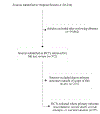Improving Suicide Prevention Through Evidence-Based Strategies: A Systematic Review
- PMID: 33596680
- PMCID: PMC9092896
- DOI: 10.1176/appi.ajp.2020.20060864
Improving Suicide Prevention Through Evidence-Based Strategies: A Systematic Review
Abstract
Objective: The authors sought to identify scalable evidence-based suicide prevention strategies.
Methods: A search of PubMed and Google Scholar identified 20,234 articles published between September 2005 and December 2019, of which 97 were randomized controlled trials with suicidal behavior or ideation as primary outcomes or epidemiological studies of limiting access to lethal means, using educational approaches, and the impact of antidepressant treatment.
Results: Training primary care physicians in depression recognition and treatment prevents suicide. Educating youths on depression and suicidal behavior, as well as active outreach to psychiatric patients after discharge or a suicidal crisis, prevents suicidal behavior. Meta-analyses find that antidepressants prevent suicide attempts, but individual randomized controlled trials appear to be underpowered. Ketamine reduces suicidal ideation in hours but is untested for suicidal behavior prevention. Cognitive-behavioral therapy and dialectical behavior therapy prevent suicidal behavior. Active screening for suicidal ideation or behavior is not proven to be better than just screening for depression. Education of gatekeepers about youth suicidal behavior lacks effectiveness. No randomized trials have been reported for gatekeeper training for prevention of adult suicidal behavior. Algorithm-driven electronic health record screening, Internet-based screening, and smartphone passive monitoring to identify high-risk patients are understudied. Means restriction, including of firearms, prevents suicide but is sporadically employed in the United States, even though firearms are used in half of all U.S. suicides.
Conclusions: Training general practitioners warrants wider implementation and testing in other nonpsychiatrist physician settings. Active follow-up of patients after discharge or a suicide-related crisis should be routine, and restricting firearm access by at-risk individuals warrants wider use. Combination approaches in health care systems show promise in reducing suicide in several countries, but evaluating the benefit attributable to each component is essential. Further suicide rate reduction requires evaluating newer approaches, such as electronic health record-derived algorithms, Internet-based screening methods, ketamine's potential benefit for preventing attempts, and passive monitoring of acute suicide risk change.
Keywords: Antidepressants; Depressive Disorders; Neuroimaging; Prevention; Suicidal Ideation; Suicide and Self-Harm.
Figures
References
-
- Prevention CfDCa. WISQARS: Fatal injury reports, national and regional, 1999–2018 2020, February 20 [Available from: https://webappa.cdc.gov/sasweb/ncipc/mortrate.html.
-
- Xu J, Murphy S, Kochanek K, Arias E. Mortality in the United States. National Center for Health Statistics. 2018;NCHS data brief, no 267.
-
- Curtin SC, Warner M, Hedegaard H. Increase in suicide in the United States, 1999–2014: US Department of Health and Human Services, Centers for Disease Control and …; 2016.
-
- Health UDo, Services H. National strategy for suicide prevention: Goals and objectives for action. Rockville, MD: Author; 2001. - PubMed
-
- OECD. Suicide rates 2017. [Available from: https://data.oecd.org/healthstat/suiciderates.htm.
Publication types
MeSH terms
Grants and funding
LinkOut - more resources
Full Text Sources
Other Literature Sources
Medical



